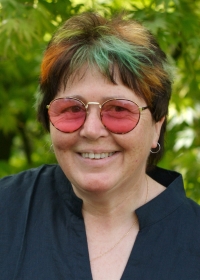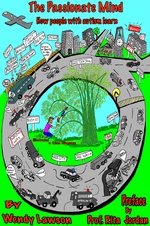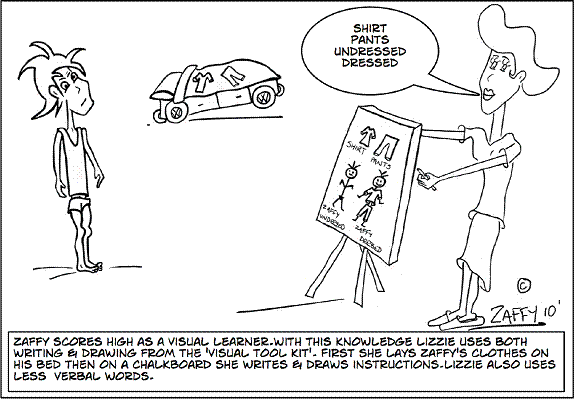 A psychologist, qualified counsellor and social worker, Dr Wendy Lawson has operated her own private practice for many years and is well known around the world as a writer, poet and adult educator. In 1994 she was diagnosed with an autism spectrum disorder – although she prefers the word ‘diffability’ to disorder – and her research seeks to explore what being differently abled means in the world of neuro-diversity.
A psychologist, qualified counsellor and social worker, Dr Wendy Lawson has operated her own private practice for many years and is well known around the world as a writer, poet and adult educator. In 1994 she was diagnosed with an autism spectrum disorder – although she prefers the word ‘diffability’ to disorder – and her research seeks to explore what being differently abled means in the world of neuro-diversity.
Here, Wendy discusses her latest JKP book, The Passionate Mind: How People with Autism Learn.
Your new book lays out your groundbreaking theory of Single Attention and Associated Cognition in Autism. What is SAACA, and how did you come to develop it?
 SAACA represents a unique way of understanding the autism spectrum.
SAACA represents a unique way of understanding the autism spectrum.
I developed this approach because it became apparent during my research that the current traditional theories about autism have so many gaps and lacks in them. When I read about autism, according to these theories, the ideas didn’t match the reality of so many living with autism, including myself. The more I researched the concepts of SAACA and compared it to other traditional theories, the more obvious it became that SAACA explained the autism spectrum (AS) so well. Not only does SAACA explain AS but it gives us access to a variety of strategies that make living with AS so much easier.
How will this theory change how autistic individuals think of themselves and navigate the world?
SAACA has enormous implications for how AS individuals think about themselves because it tells us we are not sick or diseased! Rather, we operate from a different brain configuration than typical individuals leading to particular strengths in areas of single focus or interest. It also highlights our vulnerabilities though because we are more likely to be trusting, truthful and easily troubled by things, people or events that include changes to perceived understanding of rules, regulations and real time expectations (e.g. personal beliefs, things we have been told, timetables, menus, order of events, etc.). Once the reasoning behind such events has been understood we can explore ways to navigate such change. It also must be appreciated that as individuals, we each have a particular personality and learning style. It’s important to understand this because then appropriate tools can be offered (visual, kinesthetic, auditory etc.).
It’s no good exploring issues with someone visually if they are an auditory learner, for example. But, if they are visual, like Zaffy above, using visual images for individuals who are interested in technology, a computer, iPod touch, iPhone or iPad can change how we learn in a positive way. The key implications are that single focus upon areas of interest can be useful in aiding and assisting our learning.
How can this theory help friends, family, and employers accommodate autistic individuals?
SAACA has huge potential in explaining why AS individuals do what we do; why, how and at what levels we can accommodate and understand the world and its relationships, both personal and formal. When families, educators and employers ‘get AS’ they will understand us and realise our potential for a very positive future. They will also have greater success in not taking things personally; if we don’t understand something and seem unreasonable, they will appreciate why and what to do about it.
You write beautiful poetry. Is there a connection between SAACA and your writing?
As a writer and a poet I appreciate words in a very special way. They bring to life many of the emotional aspects of who I am and the whys and wherefore of life that goes on around me. I think that SACCA for Wendy means that my interest in words and rhyme focuses my strengths in this area and enables me to build connections I would otherwise have missed. I think I would love words, even if I were not autistic. But, SAACA says that my autism enhances my appreciation of words and opens doors into realms of in-depth thinking I might not have noticed if I were neurologically typically developed (NT).
The illustrations in the book are very well done and funny! Tell us about your collaboration with the artist?
Lisa has illustrated my book and together we are currently developing the SAACA tool kit. I first met Lisa at an exhibition that aimed to launch Lisa as an artist, showcasing her artwork in Lismore, Australia. I was blown away with her artwork, with the talented and simple way that she explains things in her art and by Lisa herself who is an amazing person and now a very good friend. Lisa’s autism is key to her artistic ability and SAACA enables her to hone in on detail in a very special way. But, only in detail that captures her attention.
Learn more about Wendy and her work!
Learn more about the Lisa and her art!
Copyright © Jessica Kingsley Publishers 2010.

I love the term diffability, those on the AS spectrum do think with a different brain configuagtion. I will put you book on my to read list. I curently work with adults with autism at a residential farm in NW Ohio. Have learned so much.
So how will SAACA change current education methods and therapies for ASDs and other neuro disorders? Will/can this tool kit be integrated into current therapy methods and classroom techniques?
Brain Balance
Effective Education for Mild to Moderate Autism
http://brainbalancecenters.com
Great articles post. Keep up the good work.